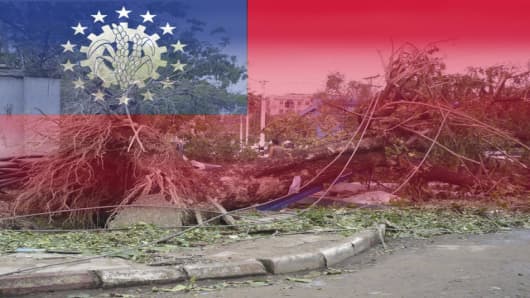The first United Nations relief flights started to arrive on Thursday for cyclone victims in military-ruled Myanmar as a U.S. diplomat said that more than 100,000 people may have been killed.
The cyclone slammed into coastal towns and villages in the rice-growing Irrawaddy delta southwest of Yangon on Saturday, the most devastating storm to hit Asia since 1991, when 143,000 people were killed in neighbouring Bangladesh.
Witnesses reported that villages were destroyed and people fought for survival by clutching trees as the storm brought walls of water charging inland from the sea.
Aid has been trickling in from other Asian nations, although frustrated governments and relief agencies are putting increasing pressure on Myanmar's reclusive military rulers to throw their borders wide open to as much help as possible.
Thailand, Japan, India, China, Singapore and Indonesia were all flying in assistance.
"The first plane has arrived with food supplies and three other flights were scheduled this morning," said Paul Risley, spokesman for the U.N. World Food Programme in Bangkok.
Richard Horsey of the U.N. Office of the Coordination of Humanitarian Affairs said in Bangkok that 5,000 square km (1,930 square miles) of the delta were under water. But the government insists it has enough reserves, although the the U.N.'s Food and Agriculture Organisation said damage to crops and stores in the delta rice bowl could mean that Myanmar will need short-term imports and miss its 2008 export targets.
Tight Rice Supplies
Reports of cyclone damage in a country that used to be the world's largest rice exporter added to worries about tight global supplies of the grain. Myanmar's rice-growing heartland was devastated by Cyclone Nargis, posing worries of long-term food shortages, rationing and political problems for its military regime.
The Rome-based U.N. Food and Agriculture Organization estimates that five states hit hardest by Saturday's cyclone produce 65% of the Southeast Asian country's rice.
Because Myanmar has produced enough rice to feed itself until now, it managed to avert potentially dangerous shortages as well as limit the kind of price increases that have hit the global rice market, where prices tripled recently. The cyclone has changed all that.
"There is likely going to be incredible shortages in the next 18 to 24 months," said Sean Turnell, an economist specializing in Myanmar at Australia's Macquarie University. "Things will be tough."
Once the world's top rice producer, Myanmar has in the past four decades seen its rice exports drop from almost 4 million tons to only about 40,000 tons. Irrigation canals and rice-storage facilities have fallen into disrepair, mostly because of mismanagement by Myanmar's ruling generals.
Myanmar's exports are so small that few expect the cyclone will have any impact on world rice prices, because its own people consume most of the rice produced.
The WFP said there are concerns about salvaging harvested rice in the flooded Irrawaddy delta, known as the country's rice bowl. It also warned that future plantings in the delta could be threatened because of "salinity and decrease of nutrients" from the storm's tidal surges.
"Over the next three to six months, there will likely be a need for family food rations in this region," said Paul Risley, spokesman for the World Food Program.
All that could spell trouble for the regime, which has already seen prices of basic necessities such as bottled water double after the cyclone.
The challenges will be rebuilding roads, bridges and irrigation canals destroyed by the cyclone, which are crucial to producing and transporting rice. Subsistence farmers who predominate in places such as Irrawaddy will need cash to rebuild their homes, and buy seed and fertilizer to replant their fields.
"In order to recover, it (Myanmar) will require massive reconstruction," Turnell said. "The regime is ill-equipped to deal with this sort of thing. It doesn't have a development mindset. Its whole mind set is staying in control."
-- Reuters and Associated Press contributed to this article.



